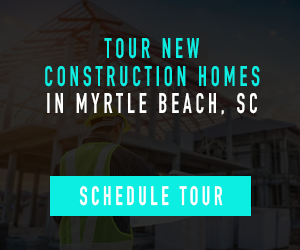
AI is everywhere—dominating headlines, conference agendas, and maybe even your smart refrigerator. And yes, it’s reshaping industries, including mortgages. But if you’re expecting AI to magically transform your business into a fully automated mortgage utopia while you sip your latte, it’s time for a reality check.
AI isn’t a magic wand. Its real value (at least in the near future) isn’t flashy but practical. It will enhance the tools you already use, making them smarter, faster, and more efficient. However, if you’re not effectively using those tools now, AI won’t miraculously fix that for you.
This isn’t a revolution. It’s an evolution. And if you’re not keeping up, you’re risking more than inefficiency. You’re risking irrelevance.
Borrowers’ expectations are evolving faster than you think
Thanks to companies like Amazon, Uber, and Instacart, consumers expect seamless, digital-first experiences. They can order dinner, track their driver and get real-time updates—all with a few taps on their phones. Naturally, they bring those expectations into their home-buying journey.
If your mortgage process relies solely on high-touch personal service, you’re at risk of falling behind. Yes, the human element will always matter, but today’s borrowers want both personal service and a digital experience that keeps pace with their daily lives.
They expect to start their mortgage application on their phone at 10 p.m., see real-time updates and upload documents as easily as posting a selfie to Instagram.
“Great customer service” alone isn’t a differentiator anymore—it’s table stakes. Without a seamless digital experience to match, your business risks feeling as outdated as a Blockbuster store in the Netflix era.
AI is already improving the mortgage experience in ways borrowers notice. It’s translating system-generated language into borrower-friendly terms, breaking down language barriers, and speeding up document processing. AI-driven automation allows loan officers to spend less time manually reviewing documents and more time helping borrowers make informed decisions—getting them to the closing table faster.
The good news is that AI isn’t coming to eliminate personal service. It’s coming to enhance it. Loan origination systems (LOSs), borrower portals and dynamic calculators will become smarter and more efficient. But if you’re not already using these tools effectively, you won’t be ready to maximize their AI-driven improvements.
Think of it like the iPhone. When it launched, it was groundbreaking. But those already familiar with texting, mobile navigation and digital communication quickly adapted and thrived. Meanwhile, late adopters struggled just to catch up, learning not only how to use the iPhone but also how to integrate mobile technology into their lives.
The same applies to AI. If your business isn’t already leveraging digital tools, you’ll be playing catch-up while competitors close loans faster, more efficiently and with higher borrower satisfaction.
One of AI’s most immediate benefits is automating borrower interactions. For example, when completing an online loan application, AI can analyze borrower-provided information and instantly generate a customized document needs list. Today, this typically happens after a loan officer manually reviews the file and sends a list via email, often taking up to 24 hours. AI eliminates that delay, prompting borrowers to upload documents immediately, improving retention and keeping the loan process moving.
What mortgage professionals need to do now
AI won’t compensate for a lack of technology adoption. If your team isn’t actively using and optimizing the systems in place today, AI won’t change that. It will only deepen the divide between tech-forward lenders and those struggling to keep up.
This means that loan officers, underwriters, and operations teams all need to adopt a “technologist” mindset, not just the IT department. Instead of viewing technology as something they “have to deal with,” they should see it as an enabler of efficiency, speed and better borrower experiences.
Mortgage professionals who take the time to learn their LOS inside and out, optimize workflows and embrace automation will be the ones best positioned to capitalize on AI-driven improvements. Those who don’t? They’ll be left behind, watching their competitors streamline processes and close loans faster.
It’s time for loan officers to commit to becoming tech-savvy. Understanding how to guide borrowers through a digital mortgage process should be as second nature as reading a rate sheet or structuring a loan.
The future Is evolution, not revolution
The future of AI in the mortgage industry isn’t about sudden, dramatic change but rather continuous improvement. AI will refine the tools you already have, helping you work smarter, not harder. And when you combine smarter tools with excellent service, you’ll not only meet but exceed modern borrowers’ expectations.
So don’t wait for magic. Master the tools you have now. Because when AI-driven enhancements arrive, the businesses that are ready will soar. The ones that aren’t? They’ll be left wondering where everyone went.
Patrick O’Brien is CEO of LenderLogix.
This column does not necessarily reflect the opinion of HousingWire’s editorial department and its owners.
To contact the editor responsible for this piece: [email protected].
First Time Home Buyer FAQs - Via HousingWire.com








